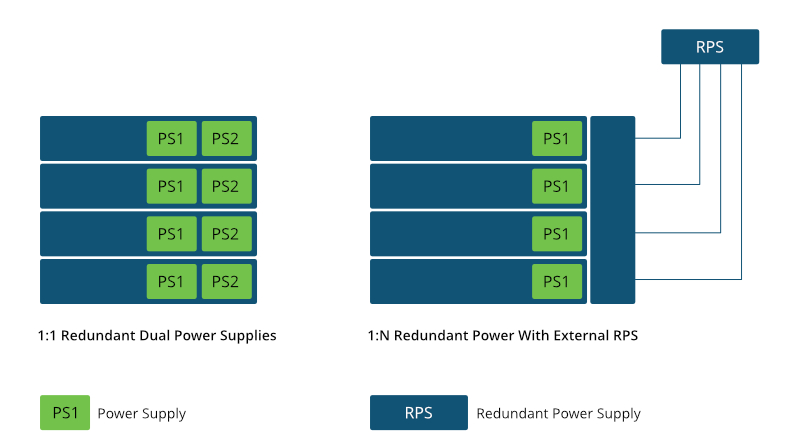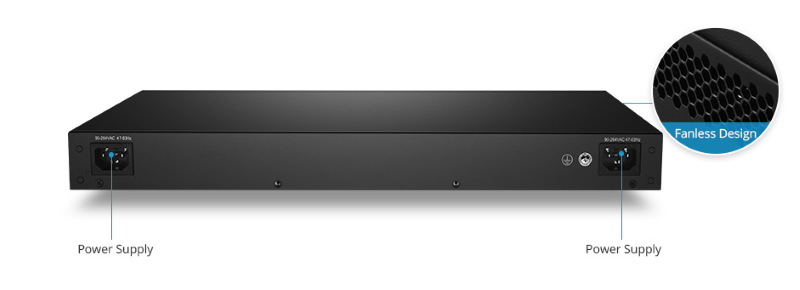What Is a Redundant Power Supply for Network Switch?
Many network switches, especially old ones, have only a single power supply. This may be a challenge when dealing with network applications that require redundant power to ensure reliability and continuous availability. Then, what is a redundant power supply? How can we benefit from it?
What Is a Redundant Power Supply?
A redundant power supply is when a single piece of networking equipment operates using two or more physical power supplies. Each of the power supplies will have the capacity to run the device on its own. This makes sure that the device could operate normally even if one power supply fails. It is usually used in servers and other highly important computers, to minimize the chance of a complete computer shutdown or failure. Now, it is prevailing in many networking devices like network switches as well.
Network Switch Dual Power Supply
The power supply redundancy could be divided into two types, namely full redundancy and partial redundancy. In full redundancy, every switch is attached to two power supplies, so that if one goes down, the other takes over. This scheme is also called 1:1 redundancy (or 1+1 redundancy sometimes). In partial redundancy, there is one extra power supply for multiple switches. When there is a power failure in your network switch, the power supply needs time switching from one source to another. This is also called 1:N redundancy. Here is the scheme of the two different types of power redundancy:

Normally, the dual power supply in a network switch usually refers to full redundancy. The two power supplies will be powered on and work at the same time. However, in a switch of full redundancy, one power supply may also be idle due to different manufacturers.
How Can We Benefit From a Redundant Power Supply?
Normally, there are three main advantages of using a switch designed with a redundant power supply. Take FS S3900-24T4S as an example. It has dual power supplies with the same advantages listed below:

Guarantee the Continuous and Normal Operation of the Equipment
Assuming there are two power supplies, if one power supply is powered off for some reason, the other one will immediately compensate to provide full power to the device so there is no downtime at all. Under such circumstances, the power supply offering compensation could be regarded as a backup of the power in the whole network.
Note: In partially redundant power solutions (1:N), it takes time to come online in the event of a power failure leading to an outage.
Supports Hot Swapping
Normally, network switches with two or more power supplies support hot-swapping. If one of the power supplies stops working, you will typically be able to replace it without taking the device offline. Equipment that operates using multiple power supplies will allow you to simply unplug the defective power supply and plug a new one physically.
Is It Necessary to Get a Network Switch With Redundant Power Supply?
Although the redundant power supply could offer many conveniences in different aspects, it has one shortcoming as well. The one downside to a redundant power supply setup is that it takes up more room within the device itself. This is why they are only used in situations where uptime is extremely important. However, a redundant power supply solves unnecessary downtime and data loss caused by accidental power damage. What’s more, there is no big price difference between a normal switch with a single power supply and a switch with redundant power supplies. Therefore, it is necessary to get a network switch with redundant power supply for better networking experience.
Related Articles:
How Much Do You Know about Power Cord Types?
FS S5860-24XB-U PoE Switch Guarantees High-reliability Power Supply
You might be interested in
Email Address

-
PoE vs PoE+ vs PoE++ Switch: How to Choose?
Mar 16, 2023














